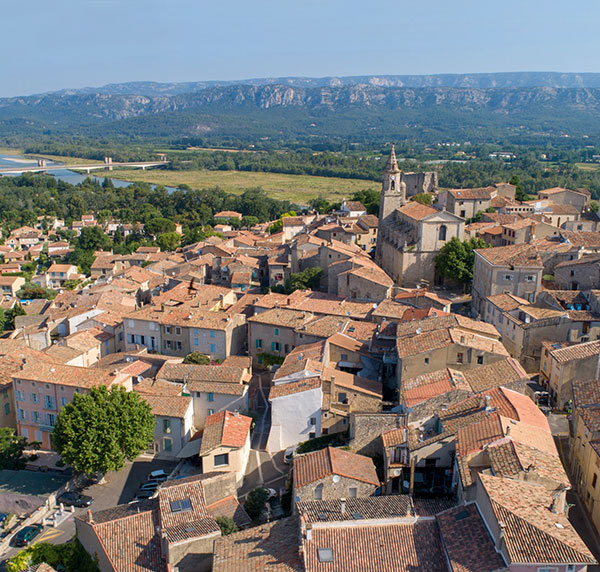Local Heritage and History

Mallemort, where tradition rubs shoulders with modernity
Nestling on the banks of the Durance, at the foot of the Luberon mountains, Mallemort has beautifully preserved its historic character.
Strolling through the old village of Mallemort, you are sure to fall under the spell of the old narrow streets and original stonework : on Rue du Château d’Eau, admire the view over the plain of the Durance River, step back in time on Rue du Cosmonaute with its stone pathway, hold your breath on Rue de la Mairie, and admire the delightful cobbled passageway on Cours Marius Taché.
In the historic centre stands the Church of Saint Michel, built in the Classical style between 1751 and 1756. For the last but unmissable stop in your tour of the village, step through the archway, just behind the church, leading to the ruins of the 12th century castle, once owned by the bishops of Marseille until the Revolution in 1789. Destroyed and taken over by houses, the Keep is all that remains today. At the base of the Keep there is an orientation table affording a magnificent panoramic view. Let your eyes wander across the Durance River and far into the distance of the Luberon.
The Mallemort bridges are the only way across the river. The oldest is the former suspension bridge, built between 1844 and 1848 on the orders of King Louis Philippe. Spanning 300 metres and with a wooden deck 6 metres wide, it is the last of the major bridges built across the Durance River. It has been swept away by floods on several occasions, first in 1872, and again in 1880, 1882 and 1886. It was very nearly destroyed by bombing during the Second World War, in 1940.
Through the middle of the plain, the Durance weaves its capricious way. In spite of its devastating floods, for which it became known as one of the three scourges of Provence (the other two being the Mistral wind and the pre-revolution regional Parliament), its waters also irrigate the land and make it fertile. Only EDF, with the building of the Lower Durance Canal and, in particular, Serre-Ponçon dam, has managed to tame and control this impetuous river except during the 100-year floods.
In the 16th century, the engineer Adam de Craponne developed a remarkable irrigation system for the Crau plain and the Lower Durance region. The now fertile, not to say flourishing, plain was ideal for agriculture. The water protected the valley from the dry heat of the Mediterranean summer. Agricultural production rose sharply across the plain, reaching its apogee in the early 20th century.
The village of Mallemort became famous for its output of fruit and vegetables at the end of the 1930s and, between 1950 and 1970 when its produce was in high demand by an expanding market. Mallemort was renowned far and wide for its carrots and melons!
The history of Mallemort is also the story of the hamlet of Pont Royal, an area which has continued to expand since the Middle Ages.
The hamlet dates back as far as the 13th century and the Moulin de Vernègues, the grain mill for the manor of Vernègues and which belonged to the Archbishop of Arles. King René would come to hunt on these lands and the manor house was used as a coaching inn.
The earliest date found for the Château de Pont Royal, which is now a winery, is 1716. Archives show that it was a posting house used by the king's messengers to change horses. Twenty-two people were employed here at the time and the hamlet gradually developed as they settled here with their families.
More recently, in 1991, Severiano Ballesteros designed his only golf course in France, set against a background of garrigues and pine forests. This superb 18-hole golf course, with its incomparable panoramic views of the surrounding landscape, opened in September 1992. It has become renowned all over Europe, as seen in the fact that it is the venue for the Masters 13, the annual international professional golf tournament.
The Domaine de Pont Royal has since become a centre of tourism and business, boasting apartment hotels, seminar rooms and restaurants springing up in this incredible place and helping to make Mallemort the dynamic town it is.
The charm and the strength of our village also lie in its typical Provençal market and the wide array of events held throughout the year, including evening markets, concerts, and theatre.

